Articles Overview
Friday, 20th March, 2015
Welcome to the Articles section of the website.
Here you will find a number of articles that will hopefully help you improve both your ukulele playing and your understanding of the instrument and it's associated musical terms.
If you would like to see anything in particular or if you have attended any of my ukulele sessions and would like further explanation about anything ukulele related, then please
contact me.
Strumming Patterns for Specific Songs
Tuesday, 25th August, 2015
I don't generally recommend an absolute strumming pattern for a song as it's more important to get the right feel but for some songs it can be useful. I will add specific strumming patterns for songs as they are requested.
"Right Said Fred" by Bernard Cribbins
The idea is to introduce an
off-beat kick within a two bar pattern. This is achieved by switching to
up-strokes after using predominately
down-strokes as follows:
A D7 A D7
------------------------------------------------
1 & 2 & 3 & 4 & 1 & 2 & 3 & 4 &
------------------------------------------------
D - D - D - D U - U D U D - D -
Notice that the second 'A' chord is moved forward a beat on the up-stroke and this also helps to emphasise that the strum has changed to the
off-beat until we change back to the
on-beat at the following 'D7'.
Tempos and Time Signatures
Wednesday, 18th March, 2015
Choosing the right tempo and knowing the time signature of a song will improve your chances of success when learning to play a new song on the ukulele.
The
tempo of a song refers to the speed at which that song is played. For the vast majority of songs that you will play, tempo is measured in beats per minute (often shortened to
BPM). This is tightly coupled to the
time signature of a song which helps determine how many beats are in one bar. The majority of the songs in the songbooks I use are in 4/4 time with a few being in 3/4 time. For 4/4 songs, count 1, 2, 3, 4 and then repeat for every bar and for 3/4 songs, count 1, 2, 3 and then repeat for every bar.
The general rule (and remember, rules are to be broken!) is that you don't change the time signature of a song as that contributes to the feel of the song but you can play any song at any tempo you like. It can be quite fun to play a slow song quickly and a quick song slowly but generally it is useful when first learning a song to play it at a tempo close to that intended by the original composer. If you find the song difficult to play, then slow the tempo down until you have mastered it at the slower speed and then increase the tempo.
People do ask at my sessions about how quickly or slowly a particular song should be played and so I have started to compile a list of some of the songs we play. I have listed the associated time signature and two tempos. The "Suggested Tempo" is the one I think you should try first as that is the one closest to the tempo we play at my group sessions and the one I think sounds about right when played on the ukulele. The "Recording Tempo" is a reasonably close measure of the tempo of the recording made by the original artist. It is almost always faster than the first tempo and can sometimes sounds a like too fast when playing the song on a ukulele.
Note for Firefox and Chrome Users: You can try out the tempos by clicking in the tempo to start a metronome set to the correct time signature and tempo. If you want to see more songs added to the list, then please
contact me.
| Song |
TS |
Suggested Tempo |
Recording Tempo |
| 110. I Can See Clearly Now - Johnny Nash |
4/4 |
100BPM |
124BPM |
| 113. Let It Be - The Beatles |
4/4 |
65BPM |
75BPM |
| 126. Que Sera, Sera - Doris Day |
3/4 |
110BPM |
164BPM |
| 128. Dream Lover - Bobby Darin |
4/4 |
112BPM |
135BPM |
| 201. The Dock Of The Bay - Ottis Redding |
4/4 |
103BPM |
103BPM |
| 203. Sherry - Four Seasons |
4/4 |
98BPM |
118BPM |
| 207. Norwegian Wood - The Beatles |
3/4 |
170BPM |
178BPM |
| 211. King of the Road - Roger Miller |
4/4 |
108BPM |
118BPM |
| 213. Islands in the Stream - Bee Gees |
4/4 |
106BPM |
106BPM |
| 215. Only You - Yazoo |
4/4 |
72BPM |
106BPM |
Open, Barre and Movable Chords
Monday, 2nd March, 2015
You don't need to know how a chord is classified in order to play it but learning to identify which group a chord fits into will help you better understand how it is formed and how to use it for different purposes.
Open Chords
An open
chord is one that includes one or more strings that are not fingered. Most of the chords that you encounter when you first start playing are open chords. Examples are:
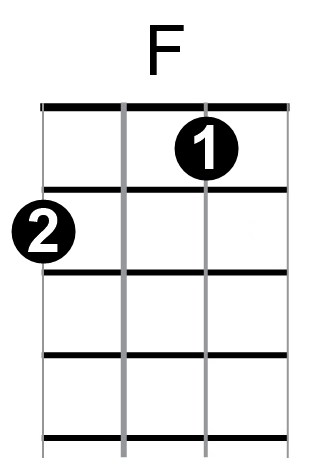
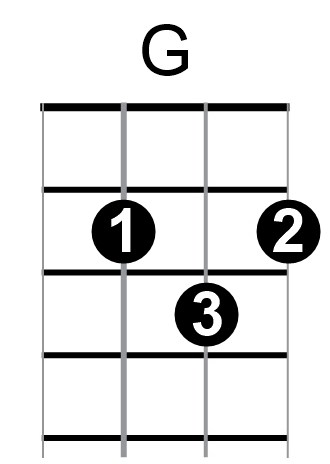
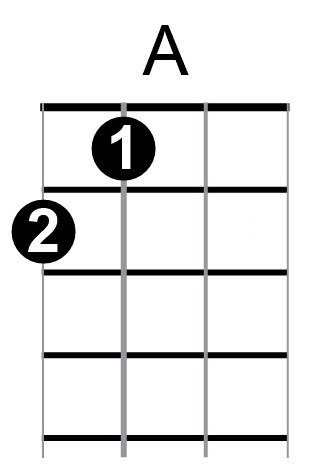
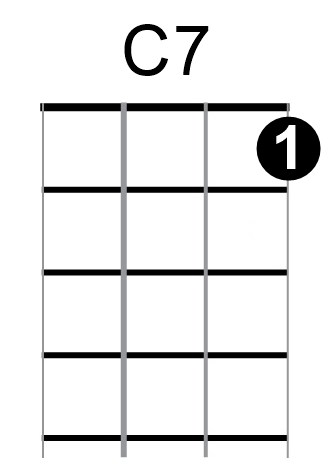
As you can see with all of these chords, there is at least one string that is not fingered.
Barre Chords
A barre (or bar) chord is one that uses one or more fingers to press down on multiple strings so that the
nut is no longer used for any strings (i.e. there are no open strings). Examples are:
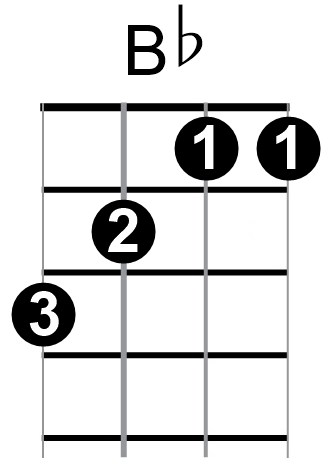
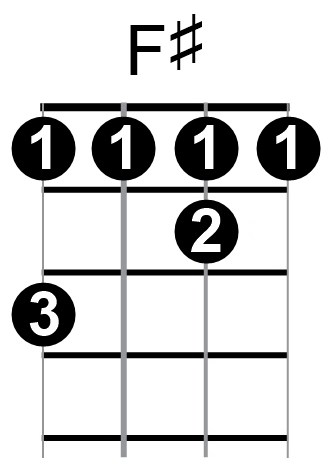
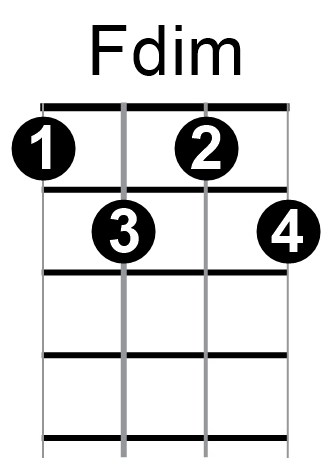
The Fdim doesn't quite fit some people's idea of a barre chord as it doesn't use a bar across the
fretboard but it does qualify.
When playing a barre chord, some people find it easier to use their 1st finger as a complete bar even though its not strictly necessary for all chords. For example, the Bb and Fdim chords above could also be played as follows:
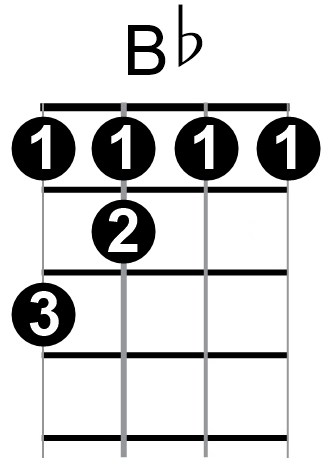
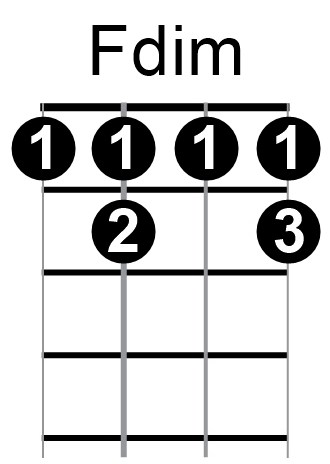
Movable Chords
A moveable chord is really any open chord that can be used as a barre chord. Chords such as A, Am, F and C make excellent moveable chords as they can easily be converted into barre chords. Other chords such as G, Fm and Gm aren't as easy to use as barre chords.
You might also hear the term shape used when describing movable chords. For example:

Bb uses the A shape moved to the 1st fret
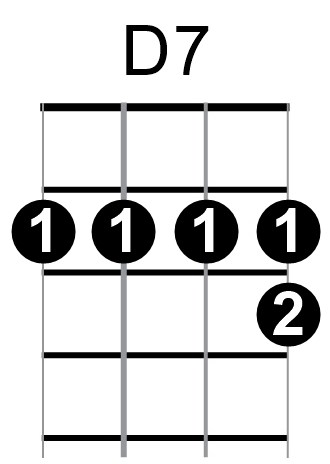
D7 uses the C7 shape moved to the 2nd fret
The beauty of a moveable chord is that once it has been mastered at the first fret, it can be moved up the
neck to produce further chords up the scale.